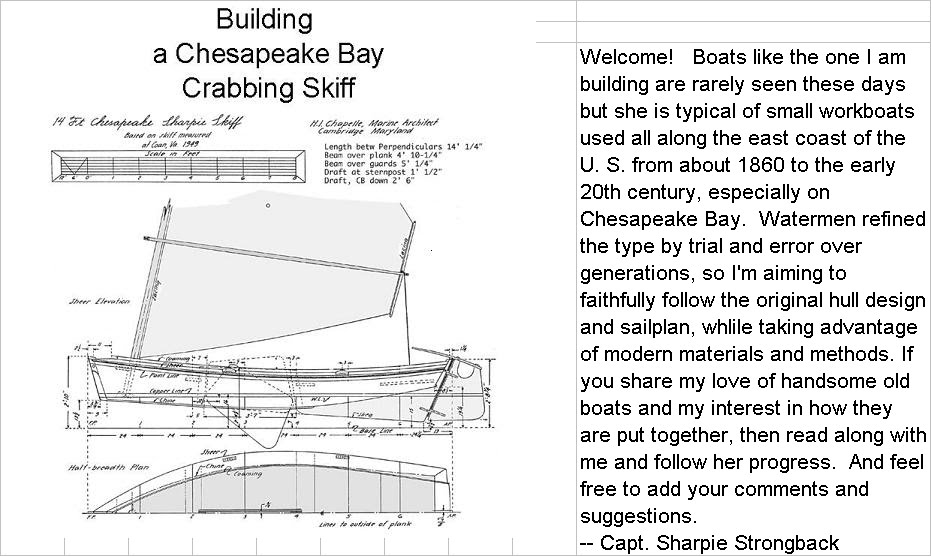On Saturday, before I started on the deck, I wanted to be sure I had enough plywood for the deck and for the coaming so I traced the coaming pattern onto a sheet of plywood. Today I cut out the eight pieces from that panel and made the coaming.
Starting with the port side, I put a 45 degree cut across the ends of the two aft layers, and clamped and tacked them in place. Then I put the forward outside layer in place, with its aft end tucked under the aft piece. I marked where they overlapped and made a matching 45 degree cut in the forward piece. I tacked it in place and repeated the process with the inside forward piece. As a result I had a full side piece assembled. At the bow it extended beyond the centerline, but I'd worry about that later. In the picture below, the scarphs are between the two sets of clamps.
I don't remember, when I made the transom, calculating how high to make the transom top above the deck height, but happily it is 1 3/8", which is just what the plans call for. I checked that I had positioned the coaming high enough that I could trim its top edge to that 1 3/8" height, I also checked that after I'd trimmed the top I would still have enough width to trim the bottom to the 4 1/2" specified width. It was close, but I had room enough both ways. So I screwed the four pieces together to hold them in their relative position and marked the 1 3/8" top line along the outside of the coaming. Then I removed the assembly from the boat and trimmed the top edge close to the cut line, finishing with the handheld electric planer. I scribed the 4 1/2" width to make a bottom cut line, and repeated the cut-and-plane. After the coaming was back on the boat I sighted along the top to make sure it made a fair curve and toched it up with the plane.
I removed the port coaming and repeated the whole process on the starboard side. Now that I knew how, that side went much more quickly. But when cutting the top edge I made the mistake of cutting to the wrong side of the cut line. To compensate for that, I placed a long piece of molding along the top edge, bent it edgewise and clamped it to provide a guide for a fair line to plane to. That seems to have worked satisfactorily.
The remaining step was to reconcile the two sides where they come together at the bow. I trimmed the two pieces to meet by a process of repeatedly marking, sawing and sanding which I do not want to describe or recommend. In the end, the two sides matched up pretty well, but I plan to cut them back further to fit into a rabbeted solid piece. Such a joining piece probably has a proper name, but I don't know what it might be. I have earmarked for that piece a chunk of tropical hardwood given to me by my father long ago. After that piece is made and fit, I will fit the bow piece of deck around it.
Lots of finish work still to be done, but the only other pieces still to make besides that coaming joint are the tiller assembly and the rub rail. From having talked to a specialty lumber shop before, I expect that yellow pine may be the only available material for the rub rail. I may shop for that tomorrow
A Happy Thanksgiving to all! Work will resume Friday.




No comments:
Post a Comment